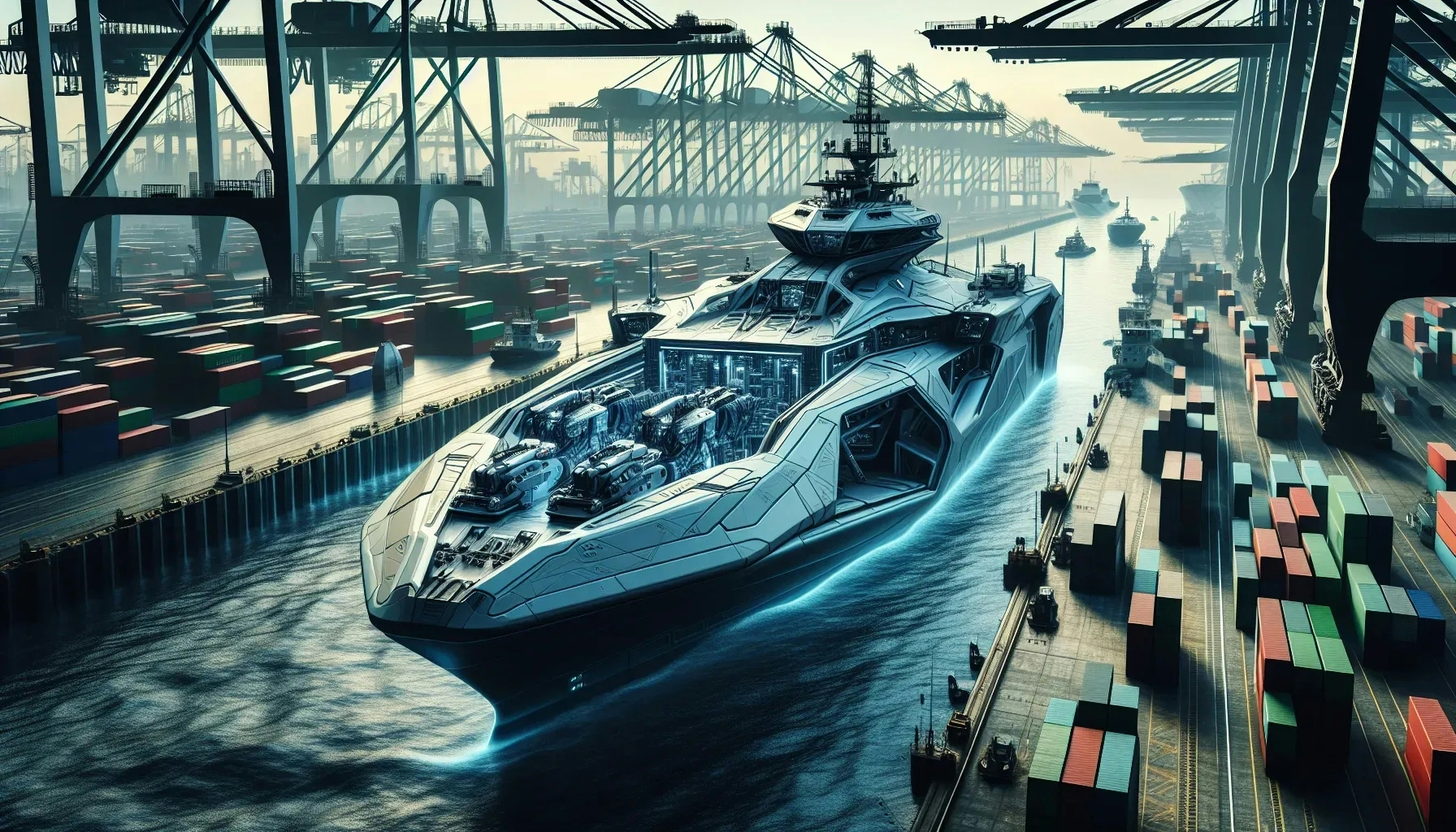Welcome to a journey through the world of shipbuilding technology. This blog post will explore the cutting-edge advancements that are revolutionizing the industry. From the use of sustainable materials to the implementation of artificial intelligence, these innovations are not only enhancing efficiency but also reducing environmental impact. Let's dive in and discover how these advancements are shaping the future of shipbuilding.
The Rise of Eco-Friendly Materials
The shipbuilding industry is witnessing a significant shift towards the use of eco-friendly materials. This trend is driven by the increasing awareness of the environmental impact of traditional shipbuilding materials and practices.
One of the most promising advancements in this area is the use of composite materials. These materials, made from a combination of different substances, offer superior strength and durability compared to traditional materials. Moreover, they are lighter, reducing the overall weight of the ship and thus its fuel consumption.
Another exciting development is the use of bio-based resins in the construction of ships. These resins are derived from renewable resources such as plant oils, reducing the reliance on fossil fuels. They also emit fewer harmful substances during production and disposal, contributing to a cleaner environment.
The Integration of Artificial Intelligence
Artificial Intelligence (AI) is making waves in the shipbuilding industry. AI systems are being used to optimize design processes, automate tasks, and enhance safety measures.
In the design phase, AI can analyze vast amounts of data to identify the most efficient and cost-effective designs. This not only speeds up the design process but also results in ships that are more fuel-efficient and environmentally friendly.
AI is also being used to automate tasks that were traditionally performed manually. This includes tasks such as welding and painting, which can be dangerous and time-consuming. By automating these tasks, shipbuilders can increase efficiency and reduce the risk of accidents.
The Advent of 3D Printing
3D printing, also known as additive manufacturing, is another technology that is revolutionizing the shipbuilding industry. This technology allows shipbuilders to create parts and components directly from digital models, reducing the need for traditional manufacturing methods.
One of the main advantages of 3D printing is its ability to produce complex parts that would be difficult or impossible to create using traditional methods. This opens up new possibilities for ship design, allowing for more innovative and efficient ships.
3D printing also reduces waste, as it only uses the exact amount of material needed to create a part. This not only saves resources but also reduces the environmental impact of shipbuilding.
The Impact of Digital Twin Technology
Digital twin technology is a concept that involves creating a digital replica of a physical object or system. In the context of shipbuilding, this means creating a digital model of a ship that can be used for various purposes.
One of the main uses of digital twins in shipbuilding is in the design and testing phase. By creating a digital twin of a ship, designers can simulate different scenarios and identify potential issues before the ship is built. This can save time and money, as well as improve the overall quality of the ship.
Digital twins can also be used for maintenance and repair. By monitoring the digital twin, ship operators can identify issues before they become serious problems, reducing downtime and maintenance costs.
The Role of Robotics
Robotics is playing an increasingly important role in the shipbuilding industry. Robots are being used for a variety of tasks, from welding and painting to inspection and maintenance.
One of the main advantages of using robots in shipbuilding is their ability to perform tasks more accurately and consistently than humans. This can improve the quality of the ships and reduce the risk of errors.
Robots can also work in environments that are dangerous or difficult for humans, such as confined spaces or areas with high temperatures. This can improve safety and reduce the risk of accidents.
The Future of Shipbuilding
With these advancements, the future of shipbuilding looks bright. The use of eco-friendly materials, AI, 3D printing, digital twin technology, and robotics is not only improving the efficiency and quality of shipbuilding but also reducing its environmental impact.
However, these advancements also pose challenges. For example, the integration of new technologies requires significant investment and training. There are also concerns about job displacement due to automation.
Despite these challenges, the benefits of these advancements far outweigh the drawbacks. As the shipbuilding industry continues to innovate and adapt, we can look forward to a future of safer, more efficient, and more sustainable ships.
Charting the Course: The Future of Shipbuilding Technology
In conclusion, the shipbuilding industry is undergoing a transformation, driven by advancements in technology. These advancements are not only enhancing efficiency and quality but also paving the way for a more sustainable future. As we navigate through these exciting times, one thing is clear: the future of shipbuilding is bright, and we are just beginning to see the potential of these technological innovations.

